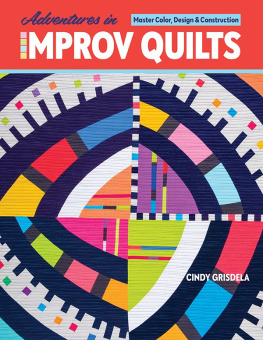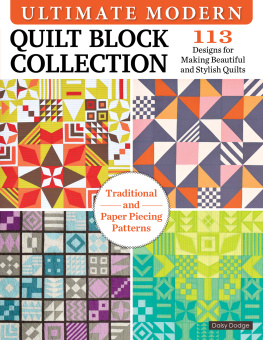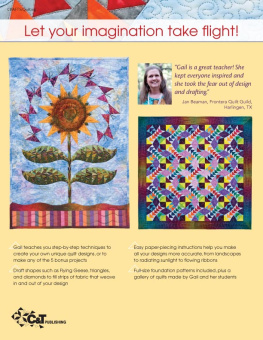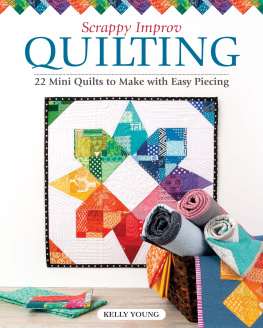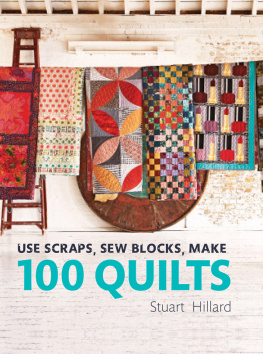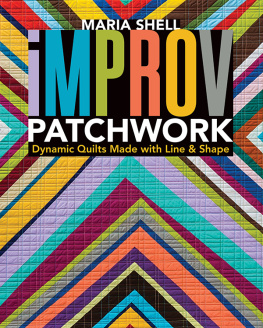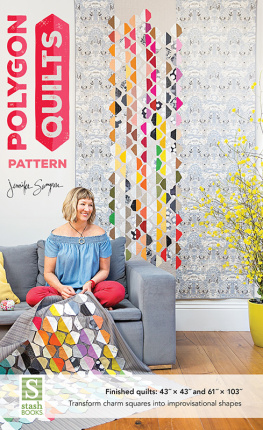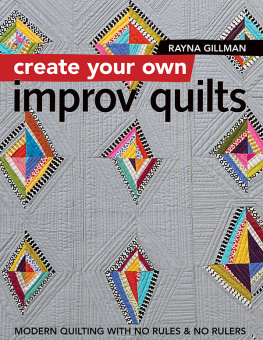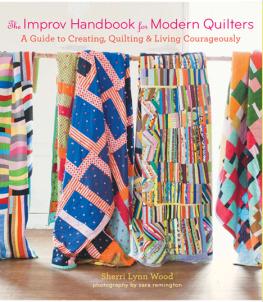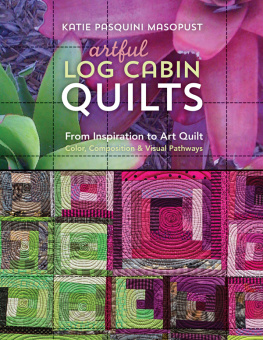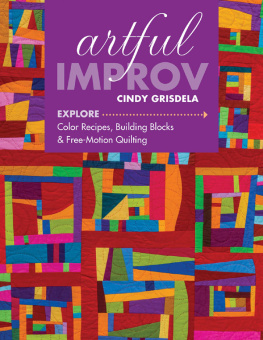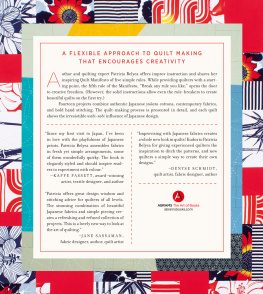
Publisher: Amy Barrett-Daffin
Creative Director: Gailen Runge
Acquisitions Editor: Roxane Cerda
Managing Editor: Liz Aneloski
Editor: Kathryn Patterson
Technical Editor: Julie Waldman
Cover/Book Designer: April Mostek
Production Coordinator: Tim Manibusan
Production Editor: Alice Mace Nakanishi
Illustrator: Linda Johnson
Photo Assistants: Lauren Herberg and Gabriel Martinez
Photography by Estefany Gonzalez of C&T Publishing, Inc., unless otherwise noted
Published by C&T Publishing, Inc.,
P.O. Box 1456, Lafayette, CA 94549
DEDICATION
This book is dedicated to my amazing students.
I hope you have learned as much from me as I have learned from you.

Acknowledgments
Although I am primarily a self-taught quilter, I have taken some valuable classes and learned from books by many talented teachers. I would like to thank Donna Radner, the late Gwen Marston, Ami Simms, and Nancy Crow for their inspiration, patience, and time. I would not be the artist I am today without their help.
And I would like to thank the editors and staff at C&T Publishing for their help and guidance in making my books become reality.
Many thanks to Tina Hilton of Turtle Hand Batiks for sharing some of her wonderful fabric for the book.
Thank you to all the students who have taken my classes, particularly to Lynne Croswell, Jane Eyes, Lynne Farrow, Denise Gossett, Elizabeth Gould, Monica Johnstone, and Susan Koefod, who shared their work for this book.
Finally, thanks to my familymy husband, Phil; my sons, Phil and Matt; and my mother, Eleanor. You ground me and lift me up.

INTRODUCTION

Blue Puzzle by Cindy Grisdela, 21 24, 2020
A s an artist, I believe its important to continue to explore new ideas and to be open to growth and change. If youre reading this book, I hope you feel the same way.
I was fortunate as a child that my parents recognized my interest in art and encouraged it. I always had crayons and paper, and as I grew older, classes in drawing, painting, and ceramics. My mother taught me to sew when I was about ten, and I had a great aunt who took me under her wing around the same time and taught me embroidery, cross-stitch, needlepoint, and knitting. I used my electives in high school to take art and art history classes, and when it was time to go to college, I chose to major in art history. But there werent any quilters in my family, and I didnt know anything about quilting until I happened to see an article in a womens magazine as a college student.
After graduating from college with a BA in fine arts, I went to work for several small financial firms to pay the bills. I have always been interested in business as well as art, so I went back to school to get an MBA in finance. I ended up working for Dow Jones News Service as a financial reporter for a number of years, then took time off to raise my sons. My creative pursuits were limited to evenings and weekends.
I couldnt get that quilting article out of my mind, and I kept it for a couple of years until I had time to try my hand at quilt making. My first efforts were less than successful, but creating with fabric and thread, color and texture was inspiring to me in a way that none of my previous artistic explorations had been. My husband comes from a family of eight children and Im the oldest of four, so there were lots of baby quilts to make to refine my skills at piecing and hand quilting. With each one, I tried some new pattern or technique. Im sure most of those quilts are in shreds by now and thats probably for the best!
I began my Improv journey more than ten years ago after nearly two decades as a traditional quilter, but the seeds of that journey were present long before I made the leap. I always enjoyed making scrappy quilts and I was particularly intrigued with Amish quilts for their color and graphic design punch.
I gave away many of the early quilts I made, but Moody Blues is an example of my scrappy approach to traditional quilts. The pattern is known as Corn and Beans and its most often made in yellows and greens. I chose to make mine in blues, my favorite color at the time, using a variety of small-scale prints. My Amish-style is another early example.

Moody Blues by Cindy Grisdela, 56 56, 2001
An early traditional quilt
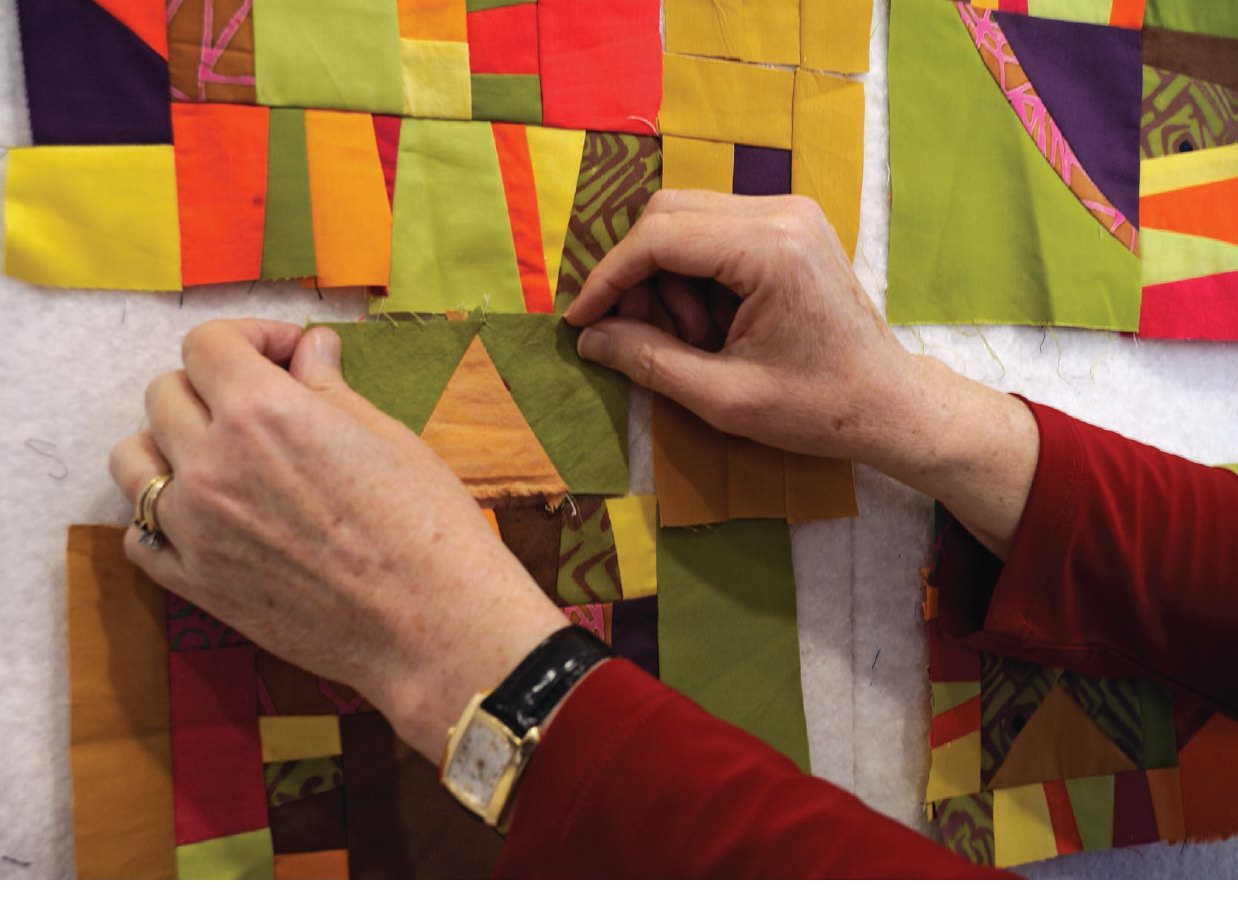
Arranging Improv blocks on a design wall
Photo by Gregory R. Staley
I am indebted to a number of teachers for their inspiration, either in person or in their books. Donna Radner, the late Gwen Marston, Ami Simms, and Nancy Crow all helped me to chart my own journey. Donna helped me understand how to use color in a dynamic way back in the beginning, Gwen liberated me from rules through her books, Ami helped me to embrace free-motion quilting, and Nancy pushed me to approach quilt design as artistic design. My profound thanks to all of them and to others who inspired me along the way.
Maybe youre just beginning your Improv journey, or youve experimented with some of the techniques and youre interested in new design ideas. With this book, I hope to inspire you to move forward on your creative journey with three different ways to create improvisationally. I start with an expanded look at multiple-cut curves, dig into ways to combine block units to create compelling designs, and discuss free cutting your lines and shapes and designing the entire quilt on the wall before sewing.
This book builds on the skills and techniques found in my first book, Artful Improv, but you dont have to use them in sequence. Try something new, embrace your mistakes and learn from them, explore your quilting DNA and use it to strengthen your creative muscles, and be fearless with color.
Lets get started!
how to useTHIS BOOK
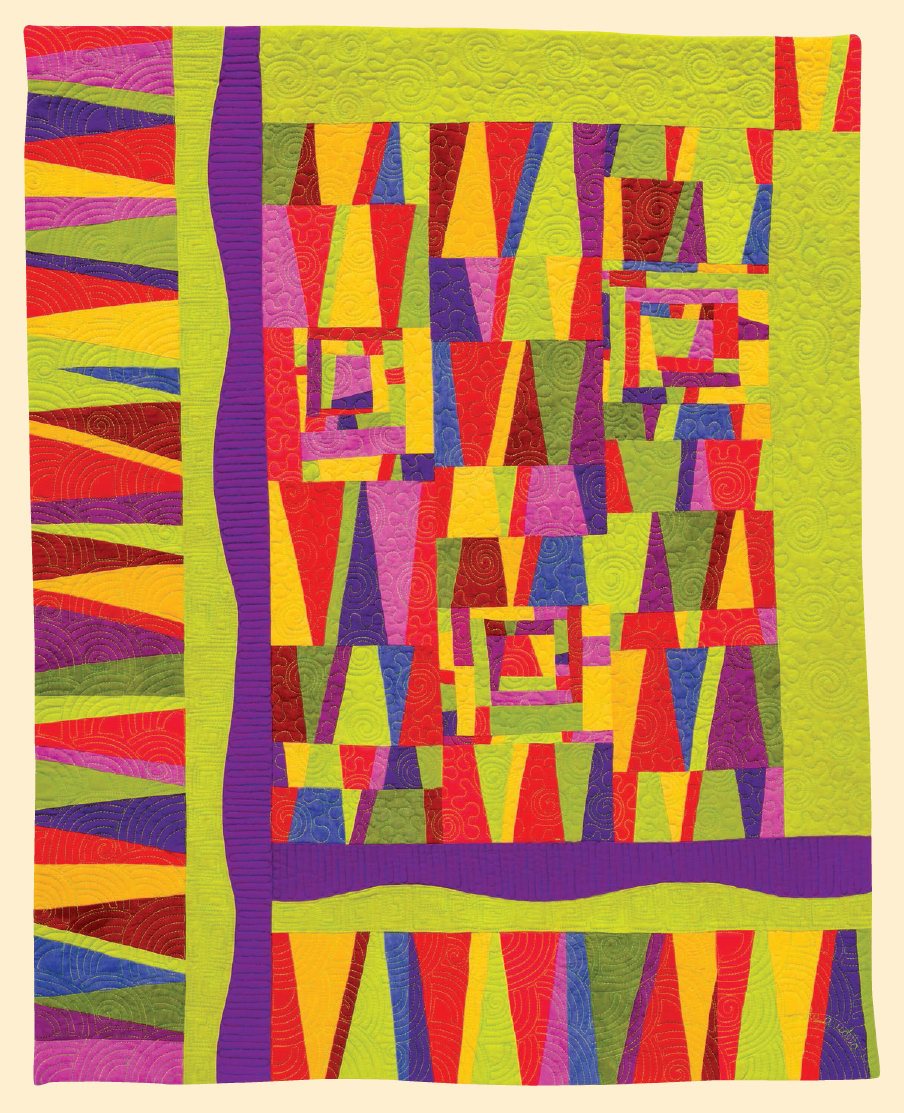
Red Rover by Cindy Grisdela, 29 37, 2020
T his is a resource book for Improv design. I hope it will inspire you to create your own original quilts by looking at color and design in a new way, examining your quilting history to help you focus on your strengths, and trying some new techniques or putting familiar elements together differently.
We all create original work in our own style, because we all have different likes and dislikes, quilting history, and experience. Your style is like your fingerprint, unique to you. No one else can create the same design in the same way as you do.
I am known for my approach to color. But I wasnt always fearless about colorin fact, in the beginning I was downright timid. Blues were my comfort zone, and I made lots of blue quilts for many years. Theres nothing wrong with exploring your comfort zone for a while, but I hope some of the concepts in this book will encourage you to step outside that zone, even if its just to add a different spark to a familiar color palette.
Next page
